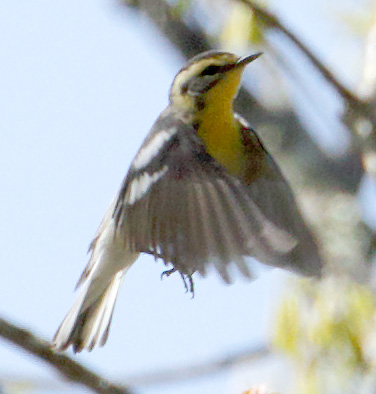
Female Blackburnian Warbler
Walt Childs and I drove to Highland County this morning to look for Blue-winged and Golden-winged Warblers along Cowpasture Road (Route 614) in Highland County, Virginia. We had seen these two species there in previous years. As we approached the Confederate Breastworks that separates Augusta and Highland Counties on Route 250, we decided to make a quick stop on the other side of Route 250 where a gravel road goes a short distance to a small parking area. We saw our first three warblers of the day there, along with a few other species.

Female Blackburnian Warbler

Female Blackburnian Warbler

Ovenbird
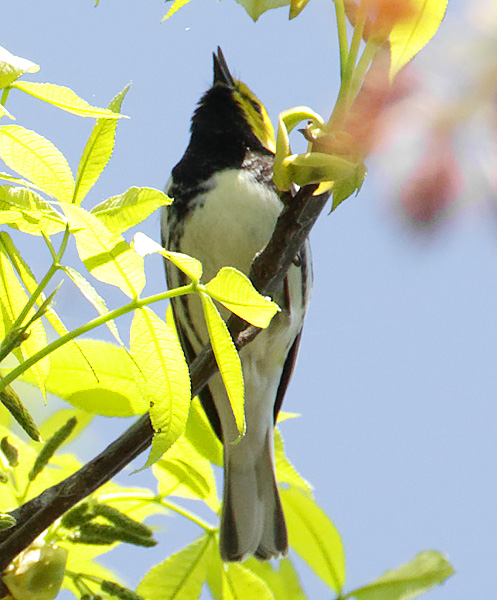
Black-throated Green Warbler
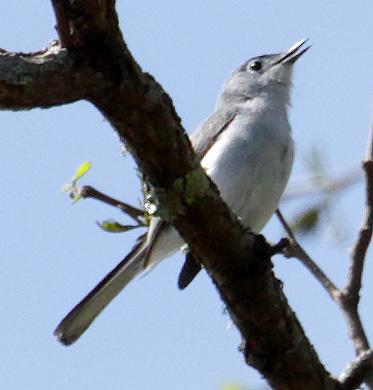
Blue-gray Gnatcatcher
When we got to Cowpasture Road, we noticed that the trees are just beginning to leaf out. This late arrival of spring has really delayed vegetative growth, and I wonder if some of the migrating birds that normally nest in west-central Virginia have settled elsewhere? The only warbler we saw there was a Yellow-rumped, but we did see several other species, including a male and a female Baltimore Oriole, but they disappeared into the woods before I could get a good photo of them.
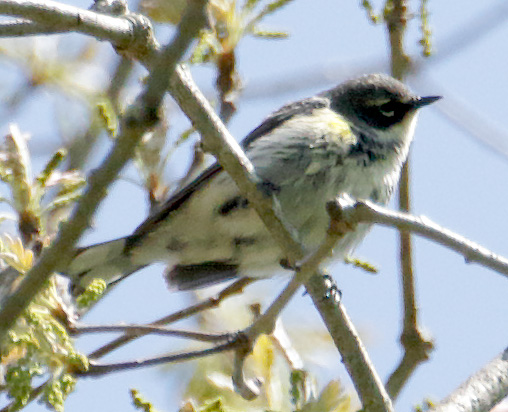
Yellow-rumped Warbler
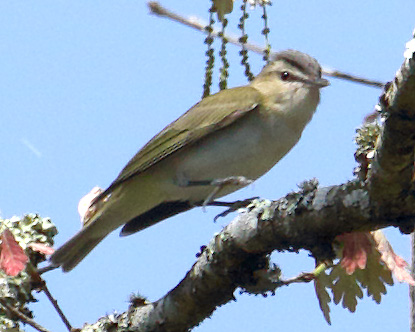
Red-eyed Vireo
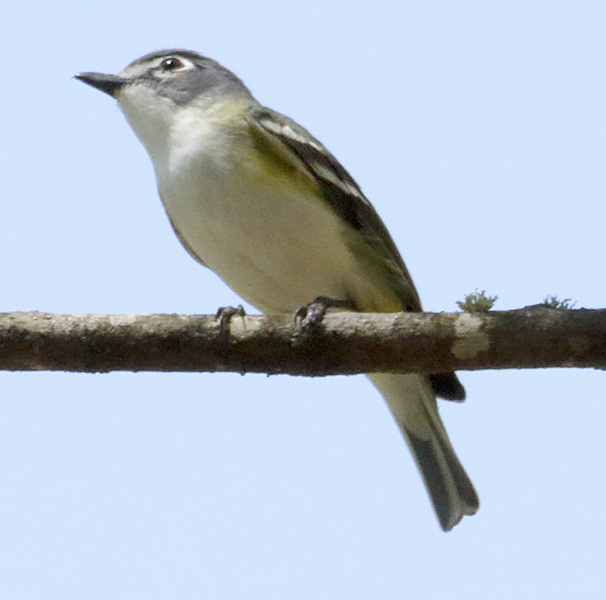
Blue-headed Vireo
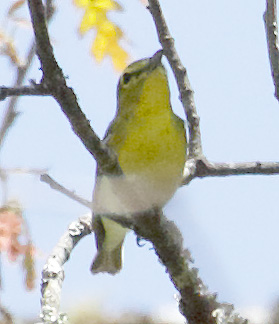
Yellow-throated Vireo
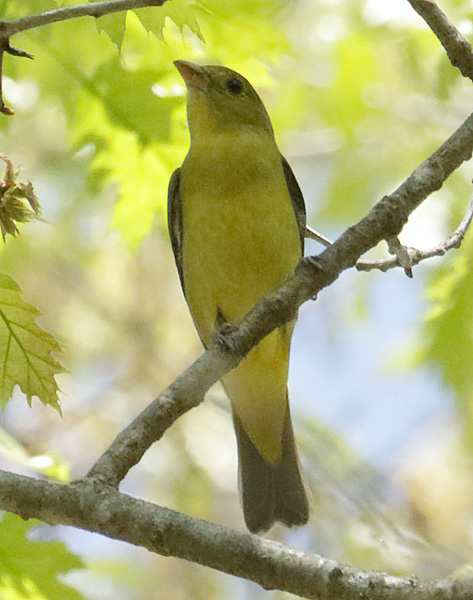
Female Scarlet Tanager
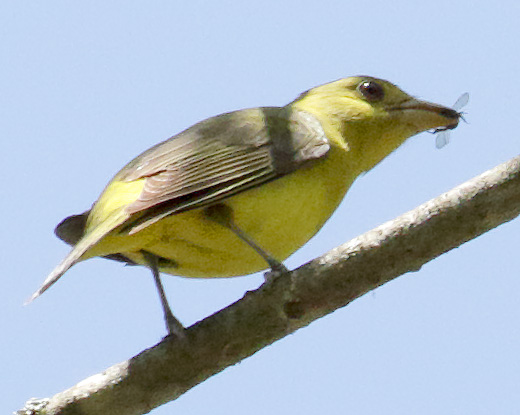
Female Scarlet Tanager
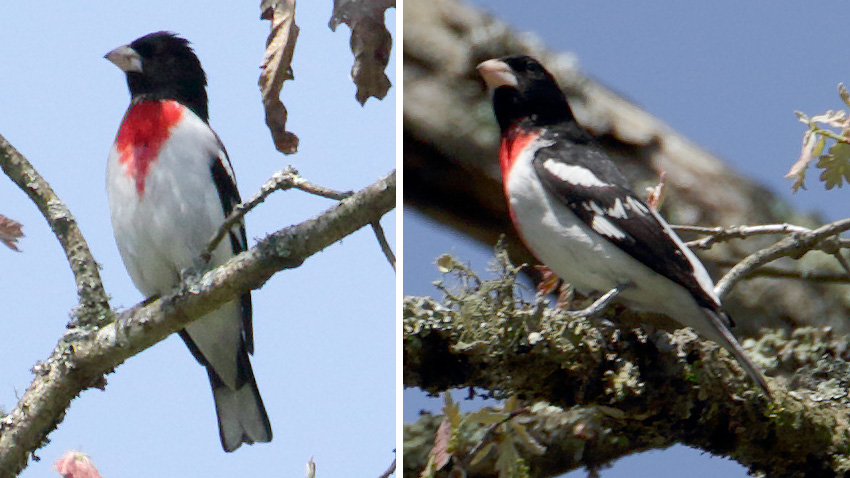
Rose-breasted Grosbeak
We then turned around, took Route 614 all the way to the West Virginia side of Reddish Knob, and started our ascent to the summit. It was already past noon, and we didn't see as many birds going up as we did last week going down that side, but we saw a pair of Great Crested Flycatchers and a few warblers.

Great Crested Flycatcher

Chestnut-sided Warbler
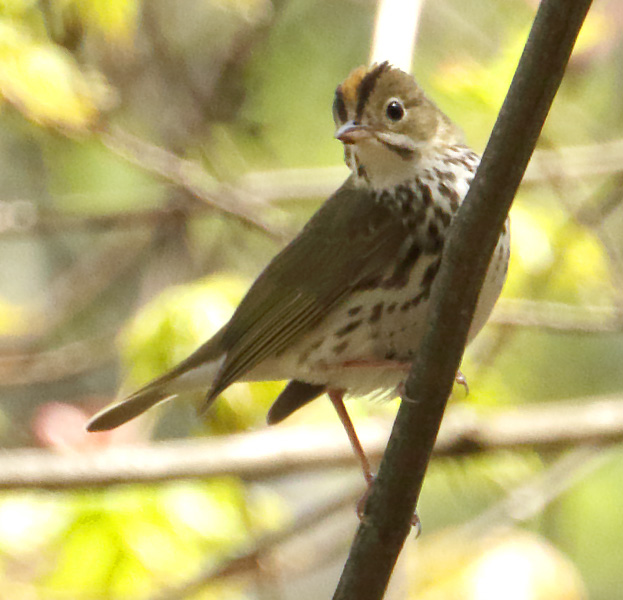
Ovenbird

Black-throated Blue Warbler
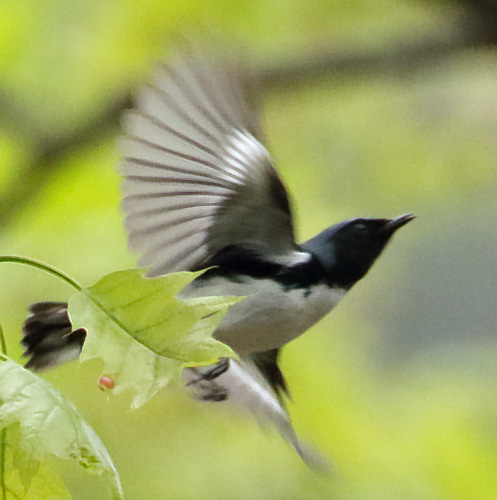
Black-throated Blue Warbler
As we neared the four road intersection where we often see Red Crossbills ingesting gravel, we wondered if they would be there. A week ago, we didn't see any of them, but it was only a few days after the Forest Service had done a controlled burn from one side of Briery Branch Road all the way to Hone Quarry. When we got there, three Red Crossbills, two males and one female, were perched in a tree. I got out of the car and took a couple of photos, and then one of the males dropped down about 12 feet away from me and started to get gravel.
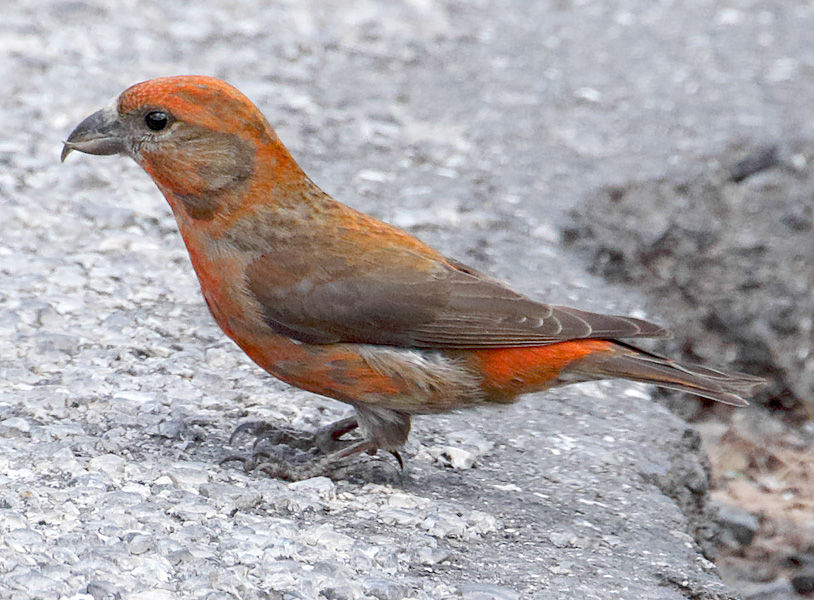
Red Crossbill
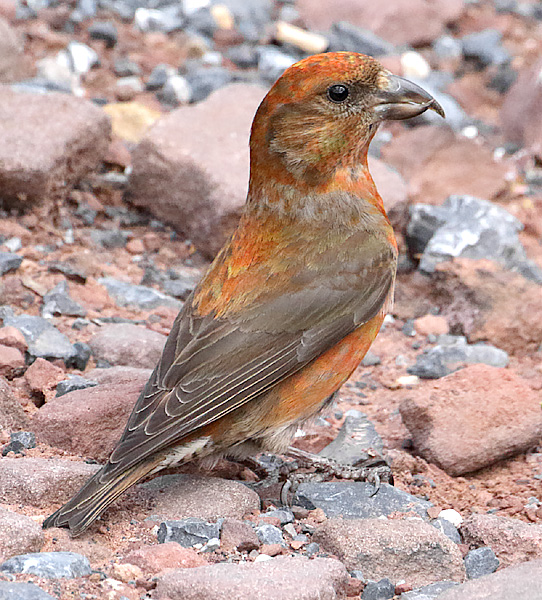
Red Crossbill

Red Crossbill
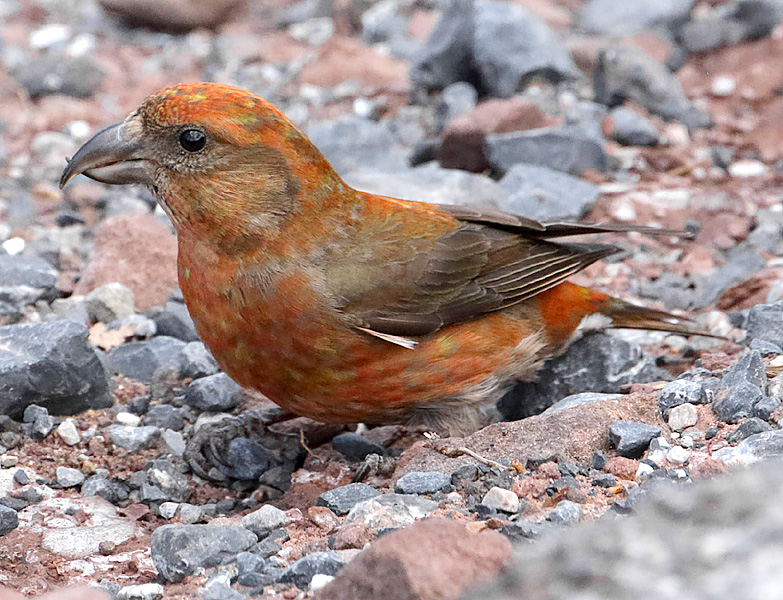
Red Crossbill
When the other two Red Crossbills realized that I was there only to take some photos, and not to harm them, they dropped down to gather gravel as well. When the first male got too close to the pair, the male of the pair scolded him away. I wanted to move so that I could get all three Crossbills in focus at the same time, so I slowly walked around to the other side. They let me get to within about 6 to 8 feet from them.
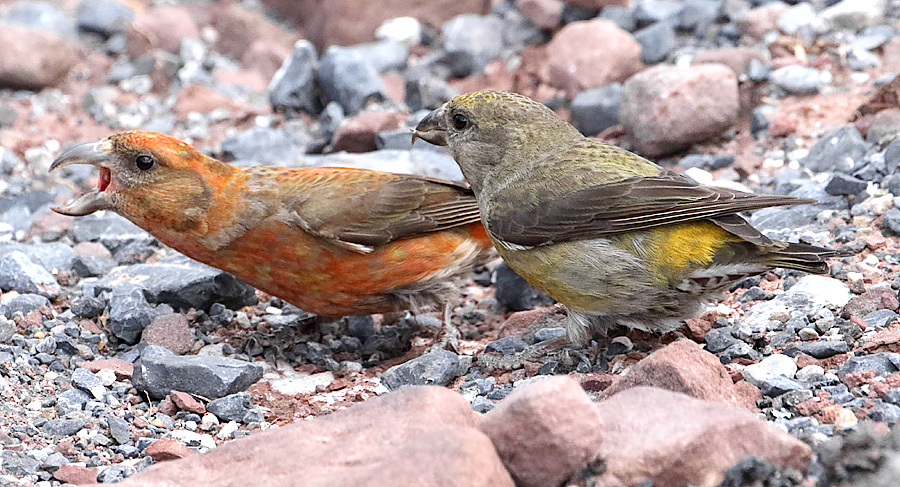
Red Crossbills
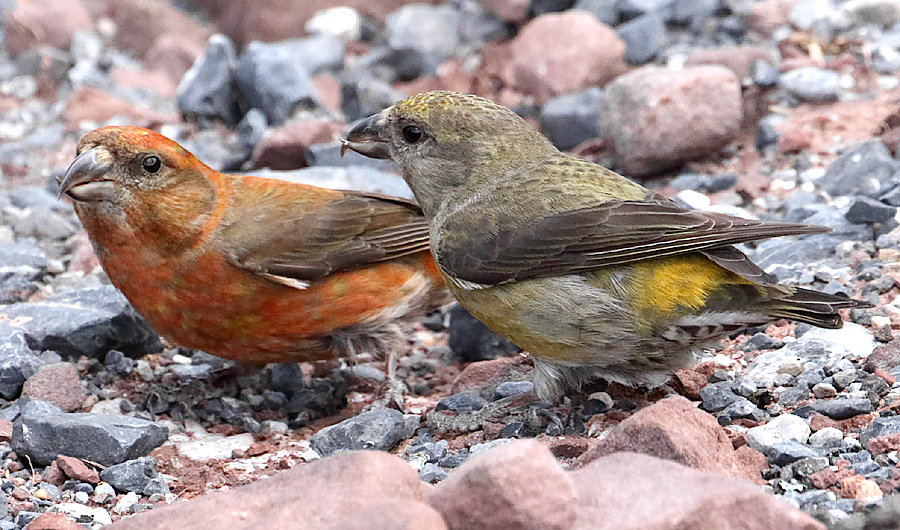
Red Crossbills
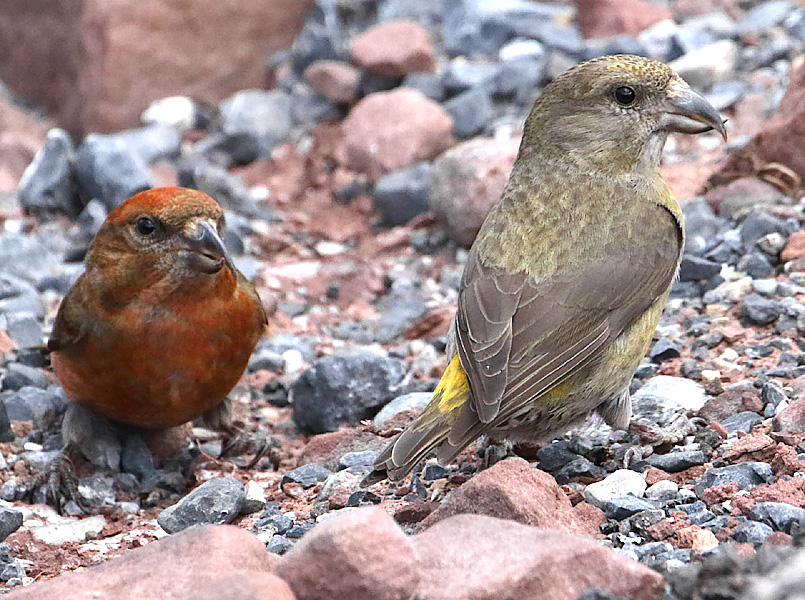
Red Crossbills

Red Crossbill
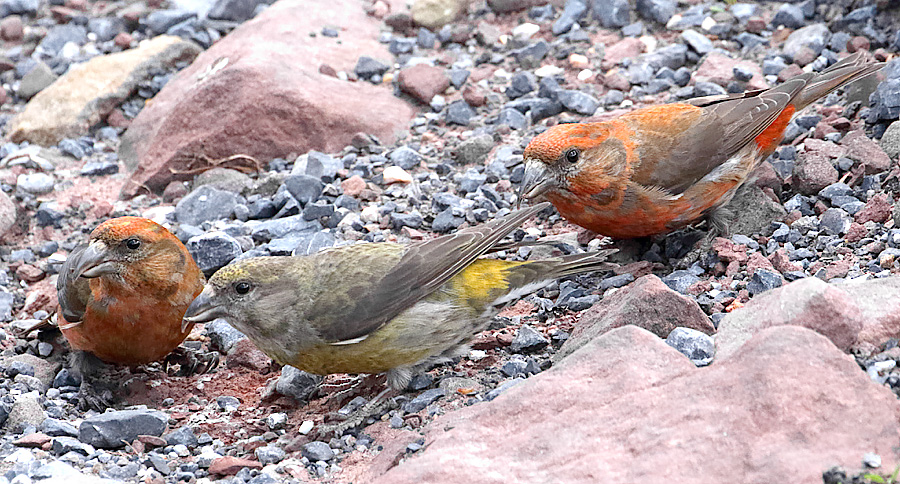
Red Crossbills

Red Crossbill

Red Crossbills
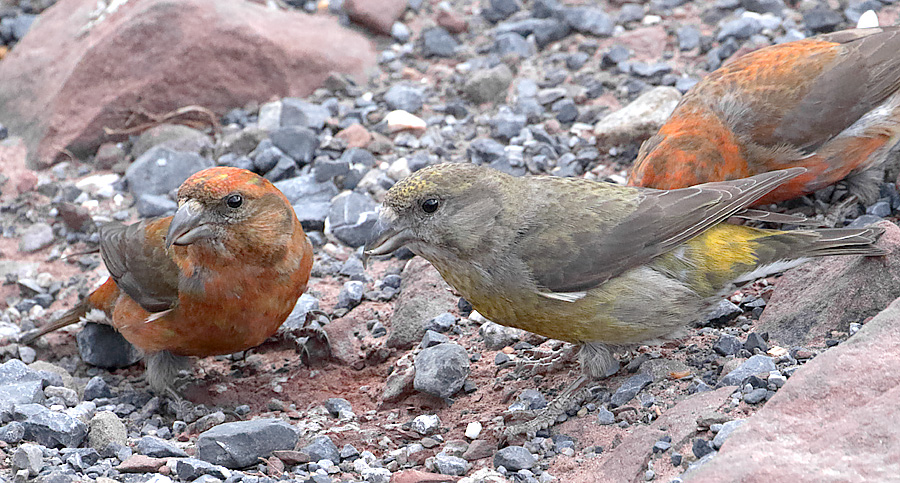
Red Crossbills
I had taken 200+ photos of these very cooperative Red Crossbills, when some cyclists coming up Briery Branch Road approached the four road intersection, and when one of the cyclists yelled loudly to another cyclist, the Red Crossbills took to flight and away from the area. Walt and I drove up to almost the summit, but saw very few birds above the four raod intersection: a few warblers and other woodland species.

Chestnut-sided Warbler
On our way down, we stopped again at the four road intersection. This time, there were 10 Red Crossbills in the trees there. I got out, took a few photos of them in the trees, and with a few seconds after the first of these 10 flew down to get gravel, a pick-up truck came barreling up Briery Branch Road and all 10 Red Crossbills flew away. I'm not sure if the first 3 Red Crossbills were part of this flock of 10, but don't think that they were, and will explain my reasoning at the end of this report.

Red Crossbill

Red Crossbill

Red Crossbill
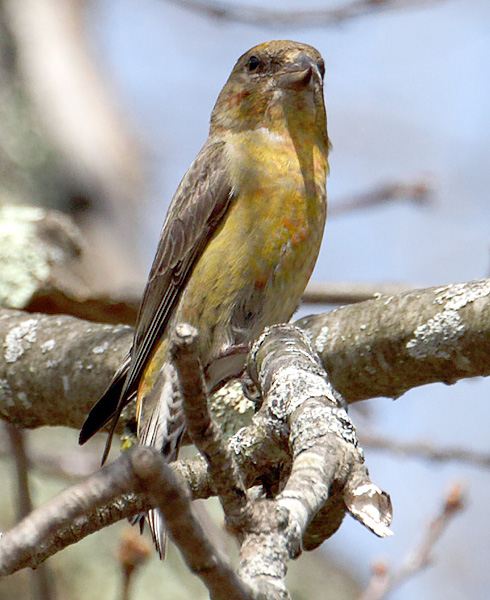
Red Crossbill
As we made our way down Briery Branch Road, we saw a few more warblers, and I heard a Hooded Warbler, but couldn't see it.
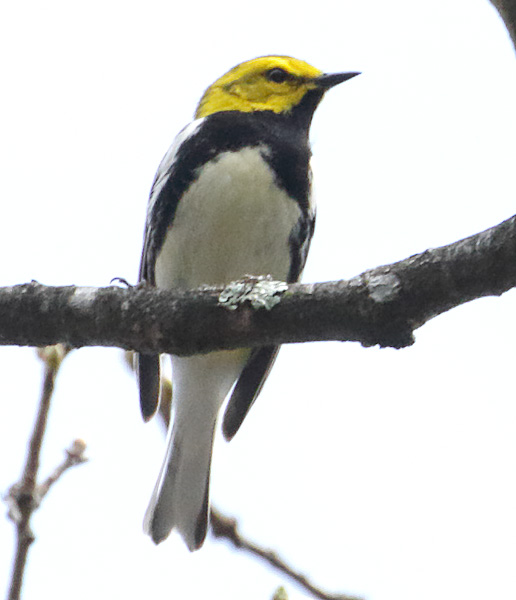
Black-throated Green Warbler
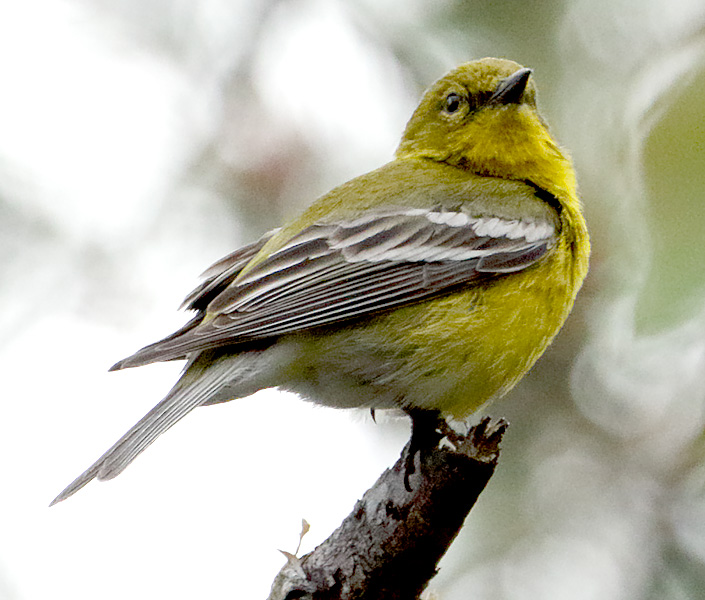
Pine Warbler
Just before reaching the reservoir at the base, there's a small stream with a bridge. We had seen Northern Parulas high up in the trees there in previous years. We stopped, I heard a Black and White Warbler (10th warbler species for the day), and then heard a Northern Parula high up, and got a few photos to confirm our 11th warbler species of the day.
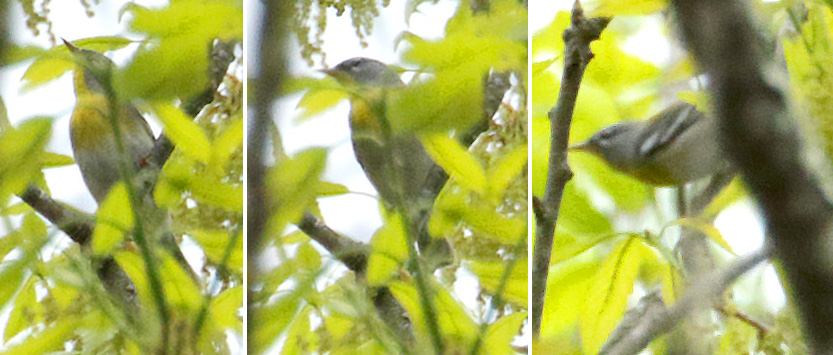
Northern Parula
Our last stop was at the reservoir to look for Bald Eagles and Ospreys. I pulled onto the gravel parking area, probably too quickly, and had to slam on the brakes when I almost hit three birds down on the gravel - three Red Crossbills - two males and a female. I have never seen Red Crossbills down at the base of Reddish Knob. I am also glad that I didn't hit them, and wonder if they were the same three Red Crossbills that were so cooperative a few hours earlier. If these three Red Crossbills were the same ones, or even if they were a different threesome, it seems that they would have been with the flock of 10 as well, as we had seen the flock of 10 only 45 minutes earlier up at the four road intersection. So we saw at leat 10, perhaps 13, or perhaps 16 Red Crossbills today. When Walt and I were there last February 21, we counted a flock of 14 Red Crossbills. We saw a few more species on our way back to the east side of the Blue Ridge, and ended the day trip with 47 avian species.